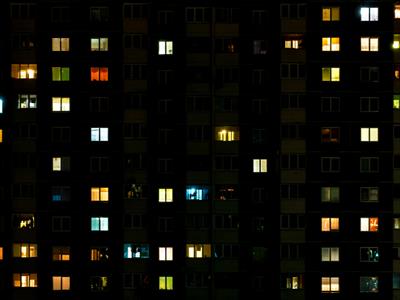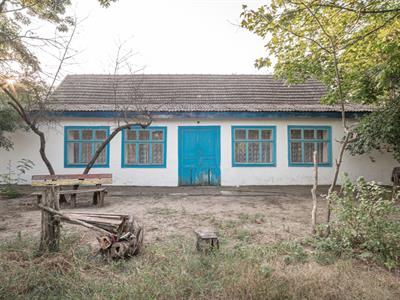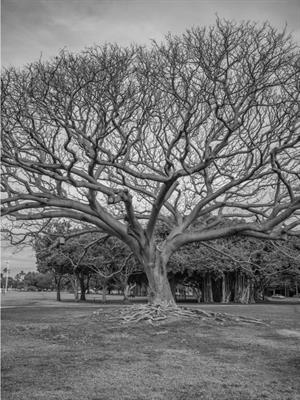PDF chapter test TRY NOW
The poem 'The House on Elm Street' is a recollection of the poet's memory of a house that carried a spooky aura to it.
Do you remember the time when you were curious about the little things around you? When big buildings, shadows and rocks trigger your interest to create stories around them? Have you ever huddled together in a classroom with your best friends listening and sharing ghost stories?
Childhood is the best time of one's life, as it is the time when one's head is brimming with creativity and questions. We try to connect the dots and spin yarns around simple things. We read adventure and mystery stories of authors like Enid Blyton and R.L. Stine and place ourselves in the situations. The poem does not mention that the narrator is a child anywhere. But the curiosity that is triggered and the thoughts that follow can make us consider the angle that it is narrated from a child's point of view. This view can take a philosophical turn towards the end of the poem.

House that stands alone
The poet starts by instilling suspense in the reader, the first line starts as 'It sat alone'. The pronoun 'It' could denote a lot of things. But the tone gives an eerie and suspenseful outlook. The poem itself unravels the theme and concept as a mystery. As the readers read the first three lines, they are curious, just like the poet herself is throughout the poem. The poet creates more tension by saying that what happens there is still unknown today. This helps unravel the fact that the 'it' denotes a place. The third line confirms the fact as she says it is a mysterious place. Now that the mood of the poem has been set, she proceeds to add more information on the place. She describes it as a spacious place. Usually, mysteries and suspenseful events unfold in big mansions and bungalows, as there is space to create tension within. She makes sure to mention that although there is space, no one lives in it, and it is isolated. She aptly describes it as 'bare to the bone', giving it an eerie touch. By now the readers understand that the place is an enclosed space like a house or building. The first stanza thus instils a tone of peculiarity.

Bare house from inside
The poet sets a spooky tone already in the poem's first stanza. She has revealed that the mysterious place that she is talking about is an enclosed space. But it is, in the second stanza, it is finally revealed that she is talking about a house. This initiates more questions to the reader's mind as to what is so mysterious about the house and why the poet feels the way she does. She leads on with the eerie flow as she says that the house is alive only in the nighttime. The house is personified here, as houses cannot be alive. But the poet uses this personification only to show that the house itself comes as a character in the mystery that is going to be unfolded. The house being alive at night shows that it has something suspicious in it, as she has already mentioned that it is isolated and no one lives in it. In a house that is empty, it is quite unlikely to even have lights turned on once. It is usually empty and dirty. But this house is mysterious as the lights keep flickering on and off without anyone doing so. This line gives a supernatural presence into the scene.

Lights flickering at night
Usually, when there is a rule that denies something, then we always feel the urge to break the rule. For example, if there is a rule that no one is supposed to enter through a particular door but can use all the other doors, we would be curious to know what the mysterious door holds in. We would want to try out the things that no one has ever attempted. Similarly, the poet is so curious to know what causes the lights or why it is spooky. She was so tempted to go inside the house and explore what the fuss was all about. But like any other human being, the poet is overtaken by fear because of the supernatural and spooky connotation to it.
Stanza 3 clears off the interpretation that the poet could be writing from a child's point of view, as she indicates that she would usually drive past the house almost every day. This shows that she lives in the same locality as the house is in and that she would have had various encounters with it. She says that the house seemed to be looking bright on the warm summer day of May as she drove past it. The house looks bright in the day, and at night it evokes spookiness. The poet is not able to move the image of the house from her mind, as she says it plays with her mind. The mystery is what makes it more interesting. She also says that the house is one of its kind, indicating that no other house gives the same feeling and it is definitely different from the normal houses.

House looks brighter during daytime
The poet slowly paints the picture of an isolated house that she is curious about. When the tone for a scary, suspenseful house is set, it does not suffice to talk about the house alone. The setting, location and the environment in which it is set also plays a vital role. The poet says that there is a tree that exists near the house. She does not say that a tree grows, rather uses the word 'sits'. This adds to the uncertain mood of the house. The house is strange and interests the poet as there are a lot of unanswered questions in her mind. The tree does not grow leaves as it is different from all the other trees. Generally, trees are a representation of growth and positivity. But in the poem, the tree symbolises uncertainty and darkness. Trees usually shed leaves in autumn, but the tree does not grow leaves in any season. The tree just exists without growing, to which the poet remarks that it does not even grow short, showing that she wanted the tree to exhibit some kind of activity, even if it was abnormal. She wonders how this could be possible.

Tree without leaves
When there is the slightest abnormality, it is quite common for people to make rumours about it and make it a sensation. Nobody knows about the house, and people who await the answers, cook their own stories up. Most people do this, as it is better to believe in random stories than not know about something, as it gives them some temporary relief. There are rumours that the poet has heard about the house, but she knows that it is not the truth that she is seeking. But people also tend to get bored of anything once they get a fresh topic to discuss about. The poet says that the house slowly starts fading away, meaning that it fades in the memory of people. But the poet is not able to give up on it as easily as that. She wonders what would have happened inside the house before it got the isolated status. Was there a happy family living there? Was there some kind of mishap that destroyed the vibe of the house? The poet does not know the answer, and hence the house remains a mystery. The poem ends with the same mysterious tone in the reader's mind as it is in the poet's mind.
